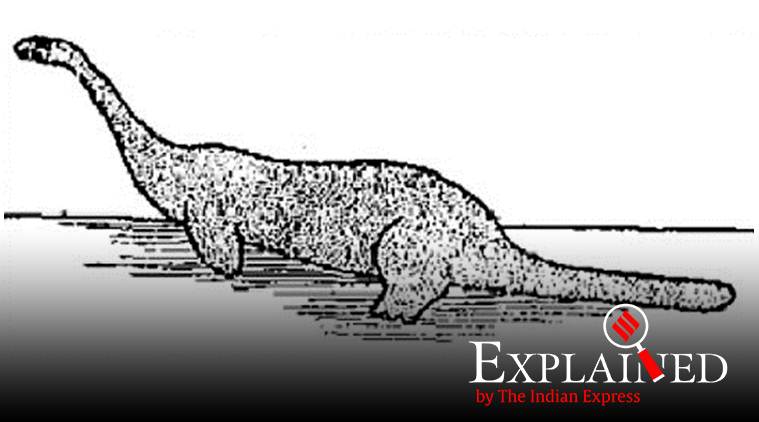Fact Check: Was the ‘loch ness monster’ a giant eel? Here’s what DNA study found
In the absence of any conclusive evidence, there have been various theories about whether “Nessie” ever existed, or whether it was an identifiable creature. On Thursday, scientists announced one more theory: the Loch Ness Monster may have been a giant eel.
 The alleged monster, as sketched in 1941 by Arthur Grant. (Wikipedia)
The alleged monster, as sketched in 1941 by Arthur Grant. (Wikipedia)
Since the 1900s, the legend of the “Loch Ness Monster” has been the subject of much debate around the world. Did such a prehistoric creature really live in the waters of Loch Ness in the Scottish Highlands?
In the absence of any conclusive evidence, there have been various theories about whether “Nessie” ever existed, or whether it was an identifiable creature. On Thursday, scientists announced one more theory: the Loch Ness Monster may have been a giant eel.
Professor Neil Gemmell, a geneticist from New Zealand’s University of Otago, told reporters in London that an intensive analysis was carried out on traces of DNA in the Loch’s icy waters. The results ruled out the presence of large animals such as dinosaurs, but there was a lot of eel DNA in the Loch.
“Eels are very plentiful in the Loch system — every single sampling site that we went to pretty much had eels and the sheer volume of it was a bit of a surprise. We can’t exclude the possibility that there’s a giant eel in Loch Ness but we don’t know whether these samples we’ve collected are from a giant beast or just an ordinary one — so there’s still this element of ‘we just don’t know’,” Reuters quoted Gemmell as saying.
Gemmell noted, however, that despite the idea of a giant eel having been around for decades, nobody had ever caught a giant one in the Loch.
The Reuters report referred to the first written record of a monster — Irish monk St Columba is said to have banished a “water beast” to the depths of the River Ness in the 6th century. In 1934 came the famous “surgeon’s photo”, showing a head on a long neck emerging from the water.
It took 60 years more before it was established as a hoax — the photo of a model attached to a toy submarine. In 2003, the BBC funded a scientific search across the Loch. Then three years ago, a high-tech marine drone found a “monster” which, Reuters said, turned out to be replica used in the 1970 film The Private Life of Sherlock Holmes.
Nessie is described as having a long neck with multiple humps on its back. Even today, many tourists travel to the Loch only to see if they might catch a sighting of the monster.
- 01
- 02
- 03
- 04
- 05






































